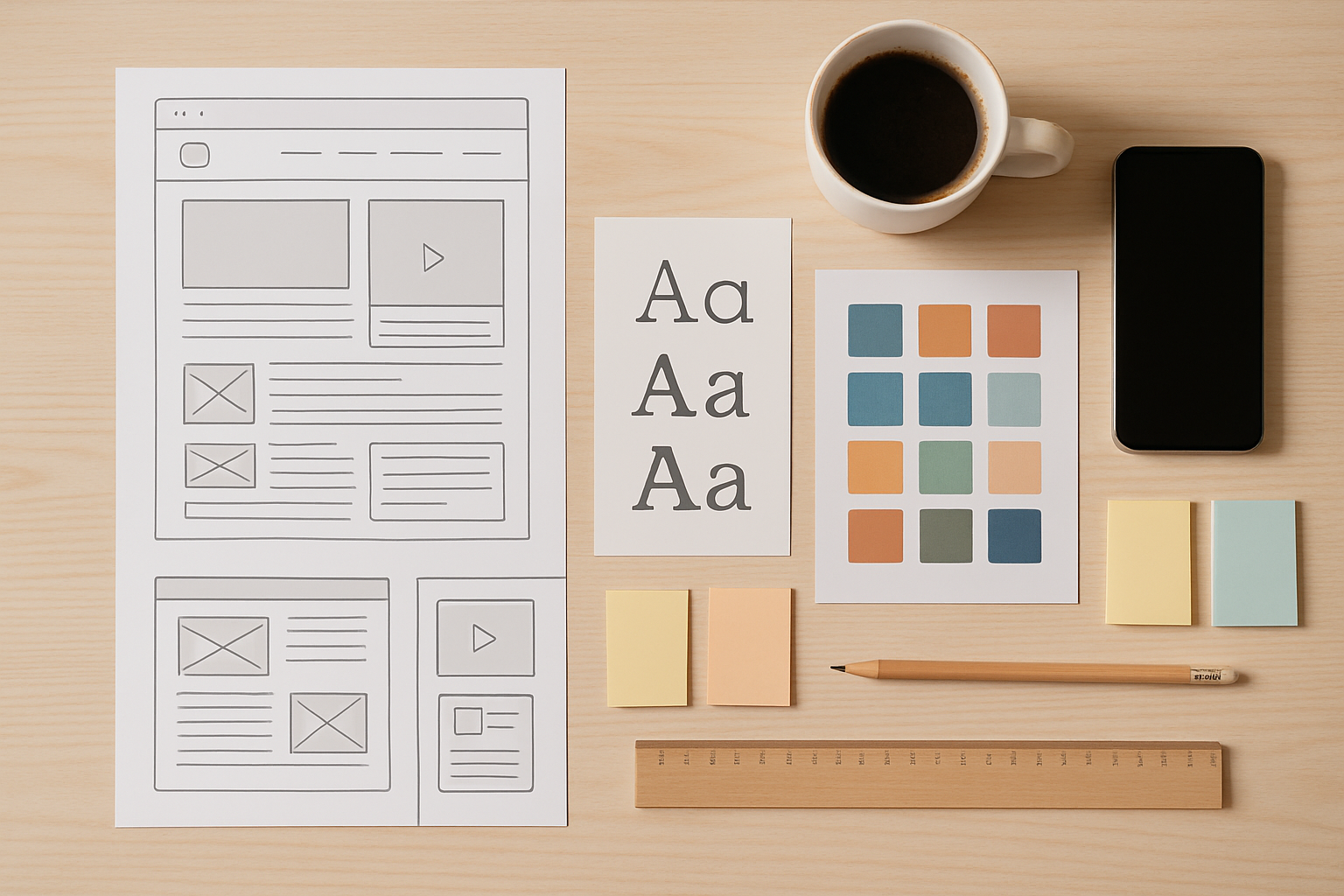Your website is often the first impression your business makes online, and first impressions count. A well-designed website doesn’t just look good; it guides users, builds trust, and converts interest into action.
In 2025, as digital experiences become more user-centric than ever, following a solid framework for effective website design is essential. That’s where the 7 C’s of website design come in. These seven principles provide a reliable checklist for creating a site that’s visually appealing, strategically structured, and built for performance.
Whether you’re starting from scratch or planning a redesign, understanding these website design principles can help you avoid common mistakes and focus on what truly matters. In this blog, we’ll break down each of the 7 C’s—Clarity, Consistency, Creativity, Content, Credibility, Conversion, and Compatibility—along with practical tips to apply them.
Let’s get started.
What Are the 7 C’s of Website Design?
The 7 C’s of website design offer a practical framework for building a site that delivers on both design and business goals. Whether you’re creating a new site or improving an existing one, these principles help ensure your website is clear, consistent, and conversion-friendly.
Here’s a quick overview of each:
- Clarity – The foundation of usability. Clear layouts, intuitive navigation, and focused messaging help users find what they need quickly.
- Consistency – A uniform look and feel builds brand trust. Design elements, tone, and structure should align across all pages.
- Creativity – Good design stands out. Creative visuals and engaging layouts grab attention and reflect your brand personality.
- Content – What you say matters. High-quality, SEO-optimised content informs users, drives action, and improves search rankings.
- Credibility – Trust is everything online. A professional design, reviews, security signals, and transparency boost user confidence.
- Conversion – Your site should guide visitors toward action. Strategic placement of CTAs, forms, and buttons increases engagement and leads.
- Compatibility – Your site must work seamlessly on all devices. Mobile responsiveness, browser support, and fast loading are critical.
Deep Dive into the 7 C’s of Website Design
Let’s explore how each of the 7 C’s of website design plays a role in building a user-friendly, high-performing site.
Clarity
A cluttered or confusing website turns visitors away.
- Use simple navigation menus and logical page flow.
- Keep the copy concise and action-oriented.
- Highlight your value proposition within the first few seconds of landing.
Clarity ensures users don’t have to guess what to do next, and that’s key to engagement.
Consistency
Design consistency builds familiarity and trust.
- Stick to a unified colour palette, font set, and layout grid.
- Keep page structures (headers, footers, CTAs) similar throughout the site.
- Align tone and voice across pages and blog content.
Consistent branding makes your business look polished and professional.
Creativity
Creativity helps your site stand out without overwhelming the user.
- Use custom illustrations, unique layout patterns, or interactive elements.
- Balance innovation with usability—don’t sacrifice clarity for style.
- Reflect your brand’s personality in subtle, visual ways.
Creative design supports brand memorability and emotional connection.
Content
Your content guides, informs, and converts.
- Use clear headings, short paragraphs, and bullet points for readability.
- Prioritise SEO by incorporating relevant keywords naturally.
- Include visual content—images, videos, infographics—to support your message.
Good content is purposeful, well-organised, and value-driven.
Credibility
Users are more likely to act if they trust your website.
- Display testimonials, reviews, and recognisable client logos.
- Use HTTPS, privacy policy links, and clear contact information.
- Avoid spelling errors or poor-quality design elements.
Credibility builds confidence, crucial for conversions and SEO.
Conversion
Your site should guide users toward specific actions.
- Add strong, visible calls-to-action (CTAs) above the fold.
- Use short, accessible forms and optimised landing pages.
- Employ heatmaps or A/B testing to improve conversion flow.
Design with purpose: Every element should support user action.
Compatibility
A modern website must work on all screens and platforms.
- Ensure mobile responsiveness with flexible layouts and scalable images.
- Test your site on major browsers and devices.
- Optimise loading speed to reduce bounce rates.
Compatibility boosts accessibility and improves both SEO and user experience.
Together, these 7 principles form the foundation of a strong web presence.
Why These 7 C’s Still Matter in 2025
While web design trends evolve every year, the 7 C’s of website designing continue to hold their ground because they focus on timeless user needs—clarity, trust, usability, and engagement.
Even in 2025, when AI tools, voice search, and interactive interfaces are becoming more common, these core principles ensure your website stays accessible, user-friendly, and business-driven.
- Users still expect intuitive navigation and fast-loading pages
No matter how modern the tech gets, people value websites that are easy to use and quick to understand.
- Brand credibility is still built through design
A site that looks outdated or inconsistent can damage your professional image, while a clean and credible design builds trust instantly.
- Conversions don’t happen by chance
Thoughtfully placed CTAs, optimised content, and responsive design all contribute to better conversion rates, especially as competition rises.
- SEO rewards solid design practices
Google continues to favour mobile-friendly, fast, and user-focused websites. Every “C” contributes to this.
If you’re designing a website now, keeping these seven pillars in mind can help you future-proof your investment and improve performance across all devices and platforms.
Final Thoughts
Designing a website is about much more than how it looks; it’s about how it works, how it feels, and what it helps your business achieve. By applying the 7 C’s of website designing: Clarity, Consistency, Creativity, Content, Credibility, Conversion, and Compatibility, you create a strong, user-focused foundation that supports your digital goals.
These principles aren’t just best practices; they’re essential components of a website that performs well in search, builds trust with users, and converts visitors into customers.
Whether you’re starting fresh or planning a redesign, use this framework as a checklist. It will help you stay focused on what truly matters: creating a website that delivers value to your audience and results for your business.
Need a professional audit or redesign based on the 7 C’s?
Let our team at Adhook Media help you turn your website into a high-performing digital asset.
FAQs for 7 C’s of website design
What are the 7 C’s of website design?
The 7 C’s are Clarity, Consistency, Creativity, Content, Credibility, Conversion, and Compatibility. Together, they form a practical framework for creating user-friendly, effective websites.
Why is clarity important in web design?
Clarity helps users find what they need quickly. It reduces confusion, improves user experience, and increases the chances of engagement and conversion.
How does content impact website performance?
High-quality content informs users, improves search rankings, and guides visitors toward action. It’s one of the most important elements of any successful website.
What is conversion-focused design?
Conversion-focused design includes CTAs, forms, and layouts that encourage users to take action—whether it’s signing up, making a purchase, or filling out a contact form.
Why is mobile compatibility crucial in 2025?
Most users browse on mobile. A compatible, responsive website ensures your content looks and works great on all devices, which also boosts SEO.

